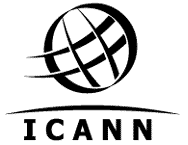At the August '99 ICANN meeting in Santiago a Resolution was adopted to establish an ad hoc group to be charged with developing the objectives and proposing structures for future policies in the area of numbering, especially as required to meet global market needs and taking into account the convergence of information technology services and networks. Under the Resolution, the group will include representatives of businesses, including telecom operators and Internet service providers and trade organizations, the ASO Council, the ICANN Board, and other legitimately interested parties. The group will present an interim report before the second ICANN public meeting in 2000. A final report from the ad hoc group will be presented to the ICANN Board prior to the Annual Meeting in 2000. ICANN actively encourages public comment on the draft charter language below. Comments should be submitted through the Public Comment Forum. Proposed Charter for the Ad Hoc Group The ad hoc group should identify the key technology, commercial and economic drivers that will affect addressing and numbering in the Internet. This assessment must include current trends in services and network convergence and globalisation, particularly those emerging from the telecommunications sector, as well as changes in the demands on traditional IP address space. Examples of technology forces to be considered include IMT 2000, 3GPP, and Bluetooth. The spread of these new technologies could require changes to the addressing structure and, potentially with it, how traffic is routed. The new technologies may also increase demand for addresses even with no changes in the structures, by virtue of being layered on top of IP. The ad hoc group shall focus on the future demands and impacts these new technologies will have on IP address space and its administration. Particular attention must be given towards global policy formation and the identification of any requirements to Internet addressing in the future. The ad hoc group shall clearly identify technologies and evolution that can be implemented by layering them on top of IPv4/IPv6 and whether technology, rather than merely policy, changes are required. Central to the success of the group will be the resolution of the requirements of new technologies with the Internet community. The resolution is needed to avoid any difficulties that could occur through the implementation of new addressing and numbering schemes.
The ad hoc group shall include representation from those specified within the Resolution passed at the ICANN meeting held in Santiago 8/99 and take due account of the need for a wide representation of interest and global diversity. The following list of participants is proposed.
Such a structure is considered to embrace all key parties and comply with the above requirements
In order to progress work within the challenging timescale set out in the ICANN Resolution the following approach is proposed:
Notes Note 1: Phase 1 tasks include identification of key drivers that will affect addressing and numbering in the Internet, including the impact of convergence. Note 2: Phase 2 tasks include assessment of technologies and evolution that can be implemented by layering them on top of IPv4/IPv6 and whether technology, rather than policy, changes are required, whether new technologies require changes to the addressing structure and, potentially with it, how traffic is routed, and whether new technologies increase demand for addresses even with no changes in the structures, by virtue of being layered on top of IP. Note 3: Phase 3 tasks include identification of options to resolve the requirements of the new technologies with the Internet community and the impact on existing structures and policies. Comments concerning the layout, construction and functionality of this site should be sent to webmaster@icann.org. (c) 2000 The Internet Corporation for Assigned Names and Numbers All rights reserved. |
